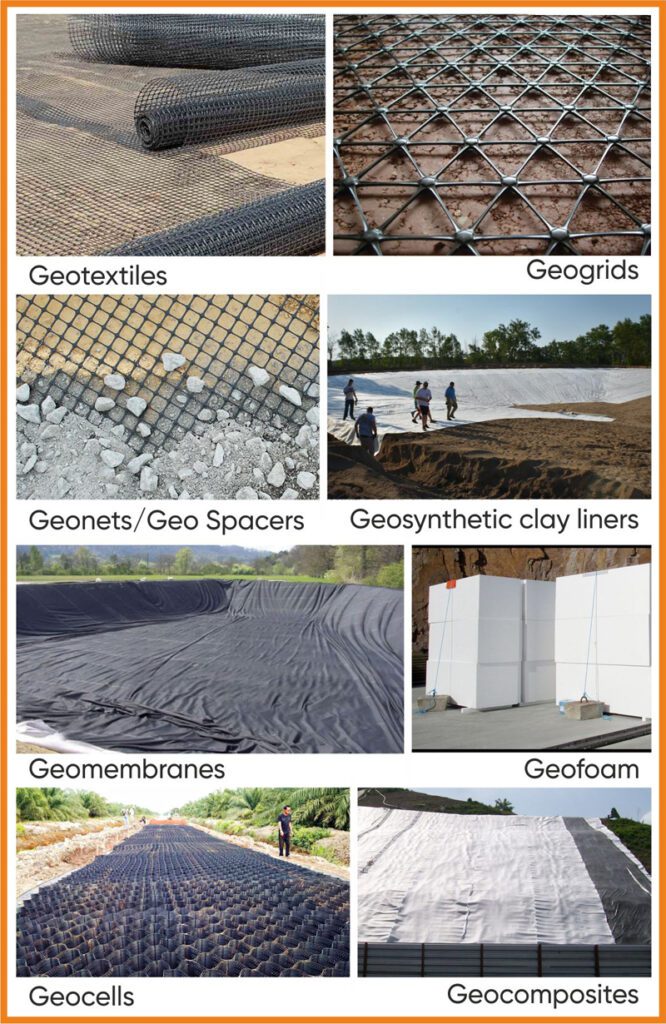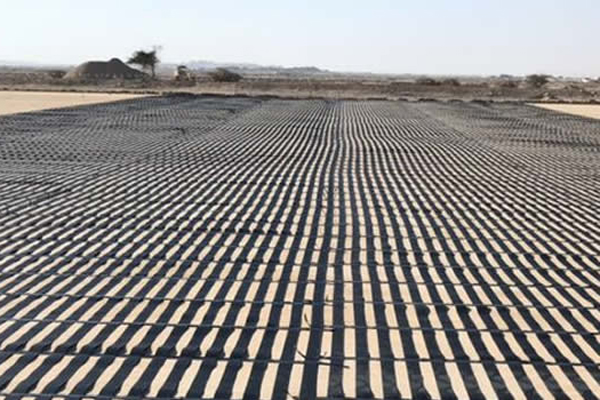Geosynthetics products are manufactured from polymeric or natural materials in the form of strips, a sheet, or a three-dimensional structure. They are easy to prepare and transport, and can help make construction projects more eco-friendly. Geosynthetics products used to stabilize terrain. They are generally polymeric products used to solve civil engineering problems. This includes eight main product categories: geotextiles, geogrids, geonets, geomembranes, geosynthetic clay liners, geofoam, geocells and geocomposites. The polymeric nature of the products makes them suitable for use in the ground where high levels of durability are required.
Types of geosynthetics products
Geotextiles
Geotextiles form one of the two largest groups of geosynthetics. They are textiles consisting of synthetic fibers rather than natural ones such as cotton, wool, or silk. This makes them less susceptible to biodegradation.
Geogrids
Geogrids are used to prevent sliding on long and steep slopes during installation and use of a landfill capping system. Geogrids represent a rapidly growing segment within geosynthetics. Rather than being a woven, non woven or knitted textile fabric, geogrids are polymers formed into a very open, gridlike configuration, i.e., they have large apertures between individual ribs in the transverse and longitudinal directions.
Geonets/Geo Spacers
Geonets, and the related geospacers by some, constitute another specialized segment within the geosynthetics area. They are formed by a continuous extrusion of parallel sets of polymeric ribs at acute angles to one another.
Geomembranes
Geomembranes represent the other largest group of geosynthetics, and in dollar volume their sales are greater than that of geotextiles. Their growth in the United States and Germany was stimulated by governmental regulations originally enacted in the early 1980s for the lining and sealing of solid-waste landfills.

Geosynthetic clay liners
Geosynthetic clay liners, or GCLs, are an interesting juxtaposition of polymeric materials and natural soils. They are rolls of factory fabricated thin layers of bentonite clay sandwiched between two geotextiles or bonded to a geomembrane and impermeable to water.
Geofoam
Geofoam is a product created by a polymeric expansion process of polystyrene resulting in a “foam” consisting of many closed, but gas-filled, cells.
Geocells
Geocells (also known as Cellular Confinement Systems) are three-dimensional honeycombed cellular structures that form a confinement system when infilled with compacted soil.
Geocomposites
Installation of a geocomposite drain. Geocomposite drains are often used on steep slopes of landfill capping systems. A geocomposite consists of a combination of geotextiles, geogrids, geonets and/or geomembranes in a factory fabricated unit. Also, any one of these four materials can be combined with another synthetic material (e.g., deformed plastic sheets or steel cables) or even with soil.
Applications of geosynthetics products
Geosynthetics are generally designed for a particular application by considering the primary function that can be provided. As seen in the accompanying table there are five primary functions given, but some groups suggest even more.
Separation is the placement of a flexible geosynthetic material, like a porous geotextile, between dissimilar materials so that the integrity and functioning of both materials can remain intact or even be improved. Paved roads, unpaved roads, and railroad bases are common applications.
Reinforcement is the synergistic improvement of a total system’s strength created by the introduction of a geotextile, geogrid or geocell (all of which are good in tension) into a soil (that is good in compression, but poor in tension) or other disjointed and separated material. Applications of this function are in mechanically stabilized and retained earth walls and steep soil slopes; they can be combined with masonry facings to create vertical retaining walls. Also involved is the application of basal reinforcement over soft soils and over deep foundations for embankments and heavy surface loadings.
Filtration is the equilibrium soil-to-geotextile interaction that allows for adequate liquid flow without soil loss, across the plane of the geotextile over a service lifetime compatible with the application under consideration.
Drainage is the equilibrium soil-to-geosynthetic system that allows for adequate liquid flow without soil loss, within the plane of the geosynthetic over a service lifetime compatible with the application under consideration. Geopipe highlights this function, and also geonets, geocomposites and very thick geotextiles. Drainage applications for these different geosynthetics are retaining walls, sport fields, dams, canals, reservoirs, and capillary breaks.
Containment involves geomembranes, geosynthetic clay liners, or some geocomposites which function as liquid or gas barriers. Landfill liners and covers make critical use of these geosynthetics. All hydraulic applications (tunnels, dams, canals, surface impoundments, and floating covers) use these geosynthetics as well.
Conclusion
A geosynthetic product comes with several functions, namely reinforcement, separation, drainage, containment, barrier, the management of surface erosion, including any other function a geosynthetic material is supposed to have. Geosynthetics products are available in a wide range of forms and materials. These products have a wide range of applications and are currently used in many civil, geotechnical, transportation, geoenvironmental, hydraulic, and private development applications including roads, airfields, railroads, embankments, retaining structures, reservoirs, canals, dams, erosion control, sediment control, landfill liners, landfill covers, mining, aquaculture and agriculture.

